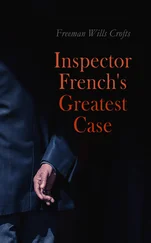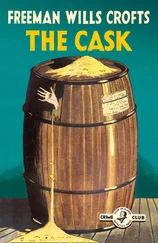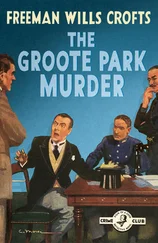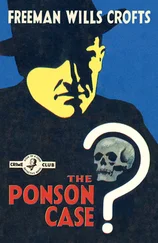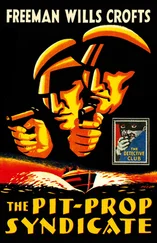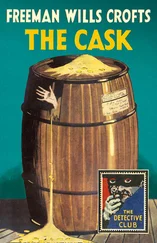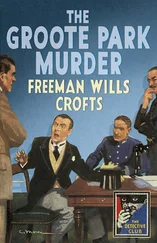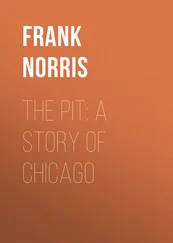Crofts’ great strength as an author was the painstaking construction of his plots rather than character delineation. In his 1937 essay ‘The Writing of a Detective Novel’ (included in the recent Detective Story Club reprint of The Groote Park Murder ) he notes:
‘If we are lucky we shall begin with a really good idea … it may be an idea for the opening of [the] book: some dramatic situation or happening to excite and hold the reader’s attention.’
Although the premise which precipitates the mystery in Pit-Prop can hardly be considered either dramatic or exciting, its very ordinariness—the inexplicable circumstances of the exchange of the numbered brass-plate on a ‘Landes Pit-Prop Syndicate’ lorry—is sufficiently intriguing to engage the reader’s curiosity. And even before we read of this minor mystery which first engages Merriman’s attention, our curiosity is aroused by a paragraph of foreshadowing, early in the first chapter:
[Merriman] did not know then that this slight action, performed almost involuntarily, was to change his whole life, and not only his, but the lives of a number of other people of whose existence he was not then aware, was to lead to sorrow as well as happiness, to crime as well as the vindication of the law, to … in short, what is more to the point, had he not then looked round, this story would never have been written.
The early chapters of the novel are somewhat reminiscent of the famous Erskine Childers’ 1903 spy novel The Riddle of the Sands . In that book two friends, while ‘messing about in boats’, notice something potentially sinister which demands further investigation. In the case of Riddle it is a matter of national and international security; in Pit-Prop it is of a criminal nature. But what crime exactly? That is the mystery facing Merriman and Hilliard and Willis; and Crofts manages to keep the reader equally mystified about this for most of the novel. Clearly Crofts was a fan of the sea and many of his titles reflect this: The Sea Mystery , The Loss of the ‘Jane Vosper’ , Found Floating , Mystery in the Channel , Mystery on Southampton Water . His casual use of unexplained sailing terminology in Chapter III—‘flush-decked’, ‘a freeboard’, ‘binnacle’—is further indication of this.
Another personal interest merits a brief mention in the previous chapter when the ‘gentle hum of traffic made a pleasant accompaniment to their conversation [Merriman and friends at their club], as the holding down of a soft pedal fills in and supports dreamy organ music’. This unusually poetic simile reflects Crofts’ interest in music: he was a church organist and choir-master in his leisure time.
While Crofts’ undoubted strengths lay in the intricate construction of his plots, it must be acknowledged that his emotional passages are less than compelling. Even knowing that Chapter X was written almost a century ago does not make the love scene between Merriman and Madeleine any more convincing or less embarrassing, as these excerpts demonstrate:
She covered her face with her hands. ‘Oh’, she cried wildly. ‘Don’t go on. Don’t say it.’ She made a despairing gesture.
‘What a brute I am!’ he gasped. ‘Now I’ve made you cry. For pity’s sake!’
‘Madeleine,’ he cried wildly, again seizing her hands, ‘you don’t—it couldn’t be possible that you—that you love me?’
There can be little doubt that Crofts had read Fergus Hume’s best-selling The Mystery of a Hansom Cab . This inexplicably popular book, published in 1886 in Australia and the following year in the UK, went on to sell over half a million copies. It is directly referenced in Chapters XIII and XIV of Pit-Prop after the discovery of a murdered man in the back of a London taxi, circumstances reflecting closely a similar scene in which the Hansom corpse was found a quarter-century earlier. And echoes of his own first novel can be detected in Chapter VII when the detective duo put a cask to investigative use. Spending many hours inside the ‘confined space and inky blackness of the cask’ is a severe test of the dedication of the pair to their detective adventure.
In true Golden Age fashion we have three maps/diagrams. A page of Chapter XX is devoted to the drawing of a railway line and a discussion of train times; much of that chapter is concerned with rail travel—a real Crofts trademark. Although the map adds little to our understanding of the plot and neither of the two earlier maps is vital to the solution of the mystery, true Golden Age fans are always pleased to find a diagram in a story, let alone three of them!
It has to be acknowledged that the legality of some of Willis’ actions in pursuit of his investigation leaves much to be desired. Tapping phone lines, picking locks, capturing fingerprints (even when the site of one particular fingerprint is very ingenious) are questionable actions, to say the least. And that taboo element of Golden Age fiction, the secret passage, is also evident—although as the solution to the crime does not depend on its existence it does not contravene any ‘rule’ of fair play.
A minor mystery for modern readers concerning The Pit-Prop Syndicate might be the title. A ‘pit prop’ is a wooden beam used to support the roof of a mine, and in the days when mining was a major industry the provision of such items was an important and lucrative business. While words such as Murder and Death did not feature as frequently in the titles of crime novels at this point in the genre’s development as they were shortly to do, The Pit-Prop Syndicate is, by any standards, a very unexciting title.
Title aside, however, Crofts’ third novel offers a blend of thriller and detective story, roughly divided between Parts One and Two of the novel. Both sections show Crofts putting his engineering training to imaginative use, and are a foreshadowing of the enormously popular Inspector French novels that would soon follow.
DR JOHN CURRAN
October 2017
PART I
THE SAWMILL ON THE LESQUE
SEYMOUR MERRIMAN was tired; tired of the jolting saddle of his motor bicycle, of the cramped position of his arms, of the chug of the engine, and, most of all, of the dreary, barren country through which he was riding. Early that morning he had left Pau, and, with the exception of an hour and a half at Bayonne, where he had lunched and paid a short business call, he had been at it ever since. It was now after five o’clock, and the last post he had noticed showed him he was still twenty-six kilometres from Bordeaux, where he intended to spend the night.
‘This confounded road has no end,’ he thought. ‘I really must stretch my legs a bit.’
A short distance in front of him a hump in the white ribbon of the road with parapet walls narrowing in at each side indicated a bridge. He cut off his engine and, allowing his machine to coast, brought it to a stand at the summit. Then dismounting, he slid it back on its bracket, stretched himself luxuriously, and looked around.
In both directions, in front of him and behind, the road stretched, straight, level, and monotonous as far as the eye could reach, as he had seen it stretch, with but few exceptions, during the whole of the day’s run. But whereas farther south it had led through open country, desolate, depressing wastes of sand and sedge, here it ran through the heart of a pine forest, in its own way as melancholy. The road seemed isolated, cut off from the surrounding country, like to be squeezed out of existence by the overwhelming barrier on either flank, a screen, aromatic indeed, but dark, gloomy, and forbidding. Nor was the prospect improved by the long, unsightly gashes which the resin collectors had made on the trunks, suggesting, as they did, that the trees were stricken by some disease. To Merriman the country seemed utterly uninhabited. Indeed, since running through Labouheyre, now two hours back, he could not recall having seen a single living creature except those passing in motor cars, and of these even there were but few.
Читать дальше




